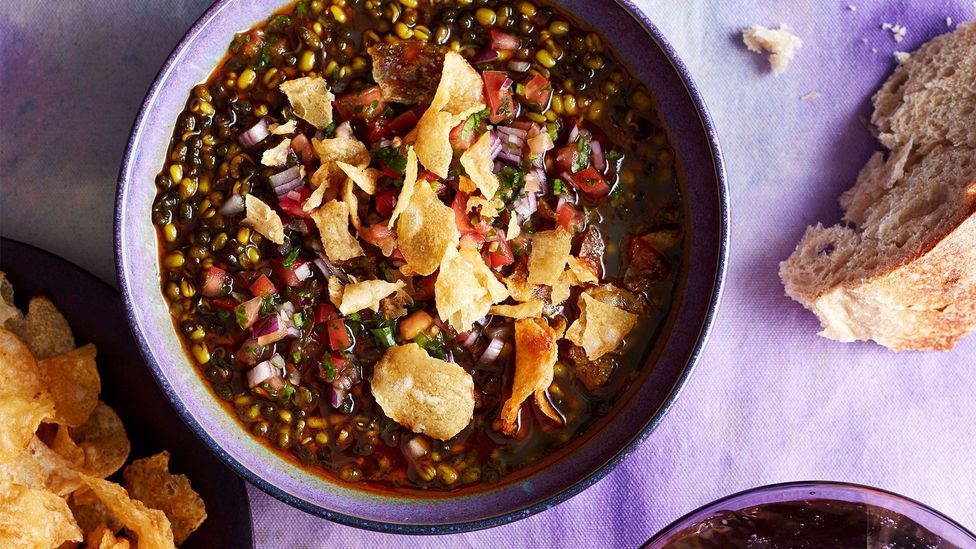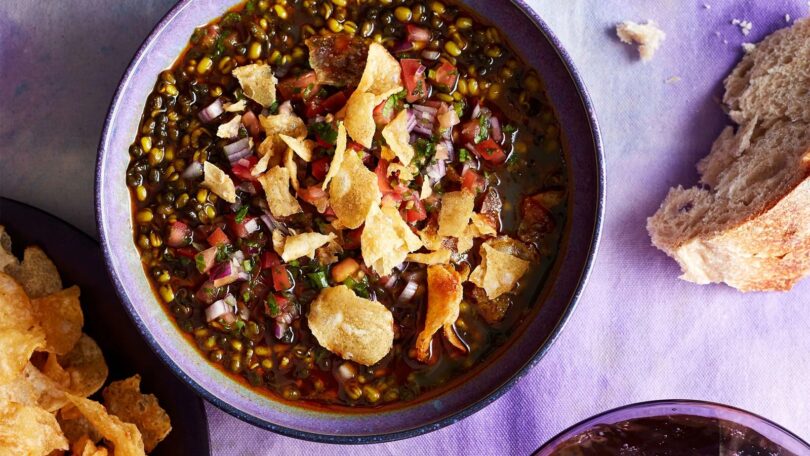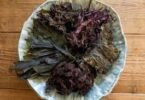Charukesi Ramadurai
Ruta Kahate is a woman on a mission to demystify Indian cooking – particularly Indian spices – for an American audience.
This cookbook author, chef and restaurateur wants people to know that it is possible to make Indian food “without a gazillion spices”. This is why she chose just six of them to star in her latest book, 6 spices, 60 dishes: Indian Recipes That are Simple, Fresh, and Big on Taste, published in January 2023. The book is a follow up to 5 spices 50 dishes, her 2007 book that went out of print a couple of years ago. As she explained, “People are intimidated by spices, or they are just unsure and don’t know how to use them.”
Whether Kahate is conducting Indian cooking workshops at a farmers’ market in San Francisco or setting up a new restaurant in the American Midwest in the middle of the pandemic, her goal has always been to make Indian cooking more approachable. “I want people to use the [recipes in the] book, and not keep it on a shelf and say, ‘oh, one day I will make Indian food’,” she said. As such, each recipe comes with a brief and chatty introduction and a serving tip at the end.
In the book, Kahate’s six core spices – chosen for their ubiquity in Indian cooking as well as easy availability in American grocery stores – include cumin seeds, coriander seeds, mustard seeds, turmeric, cayenne and asafoetida (a uniquely Indian spice made of gum resin extracted from a variety of fennel). The latter is a particularly bold move, given that the spice has such a strong smell that it is known as the devil’s dung.
Kahate has not just included asafoetida but devoted an entire recipe to it: Devil’s Dung Potatoes. As she wrote in the book, “I couldn’t resist the name, because these saucy potatoes wouldn’t be half as good without asafoetida. A generous amount of the magical spice gives the dish its wonderful onion-garlic flavour, despite the fact that neither of those ingredients is present.”
Given that she is “mostly vegetarian”, Kahate’s book has a large number of vegetarian recipes (that can also be made vegan) containing everything from aubergine and Brussels sprouts to bamboo shoots and young jackfruit. “I’ve even snuck vegetables into dals and into meat dishes as well,” she admitted.
There are also several gluten-free dishes that make use of the local millets and grains she grew up eating back in India. Interestingly, while some of the dishes make use of all the spices, there are a few that require only one. But all of them have what she says are uniquely and unmistakably Indian flavours.
The recipe for Spicy Curried Mung Sprouts is a nod to the Maharashtrian community (from the west Indian state of Maharashtra) she comes from, where “we sprout everything from fenugreek seeds to dals to sometimes even grains,” she said. Sprouting lentils and grains is believed to make them healthier and easier to digest, while increasing their vitamin and mineral content.
Mung beans (called moong dal in India) are common across regional Indian cuisines, used in salads, stir-fries and curries, and even ground into a thick batter to make crepes. In fact, there are two other mung recipes in the book: a mung sprouts salad and mung bean and cottage cheese wraps.
This aforementioned dish has been adapted from the Maharashtrian misal, a spicy and tangy sprouts curry, eaten with soft and spongy bread known as pav. Misal is found both in home kitchens as well as in street food stalls and can be made to suit a wide range of spice tolerance levels.
Kahate says she frequently makes this curry at home, serving it with steamed rice or a crusty baguette. In addition to a fresh relish of tomatoes and onions, her dish is topped with crumbled potato crisps for extra crunch (in place of the fried gram flour bits that are traditionally added for texture).
With sprouted mung beans readily available in shops, this is a quick and easy nourishing meal.

Spicy curried mung bean sprouts (Credit: Ghazalle Badiozamani)
Spicy Curried Mung Sprouts recipe
By Ruta Kahate
Serves 4
Method
Step 1
If you are sprouting your own whole green mung beans, rinse them in a couple of changes of water and then place in a bowl and cover with plenty of water. Let soak overnight or for 6 to 8 hours. Drain the water and discard any beans that haven’t plumped up: you will hear them rattling noisily in your bowl.
Step 2
Transfer the soaked mung beans to a glass container and loosely cover with a lid; you want to ensure that air can still reach the beans. Set aside in a dark corner of the kitchen – the beans should sprout in a day. At this point you can proceed with the recipe or transfer the sprouts to the refrigerator in an airtight container where they will keep for a week.
Step 3
To make the curry, heat the ghee in a wok over medium heat. When it’s hot, add the mustard and cumin seeds. When they’ve stopped popping, add the turmeric and asafoetida and then the sprouted mung beans. Follow with the coriander, cayenne and ground cumin and toss well.
Step 4
Add the water, sugar and kosher salt and bring to a boil. Turn down the heat to low, cover, and simmer until the sprouts are cooked and the sauce has reduced a little bit, 10 to 12 minutes.
Step 5
To make the relish: in a small bowl, mix together the onion, tomato, coriander, lemon juice, chilli and pink salt. Taste for salt and tartness and adjust to your liking. To serve, ladle some of the hot curry into a bowl and then top with the relish and some crumbled potato crisps.
Serving tip
Serve with crusty bread for dipping.
Courtesy: BBC







